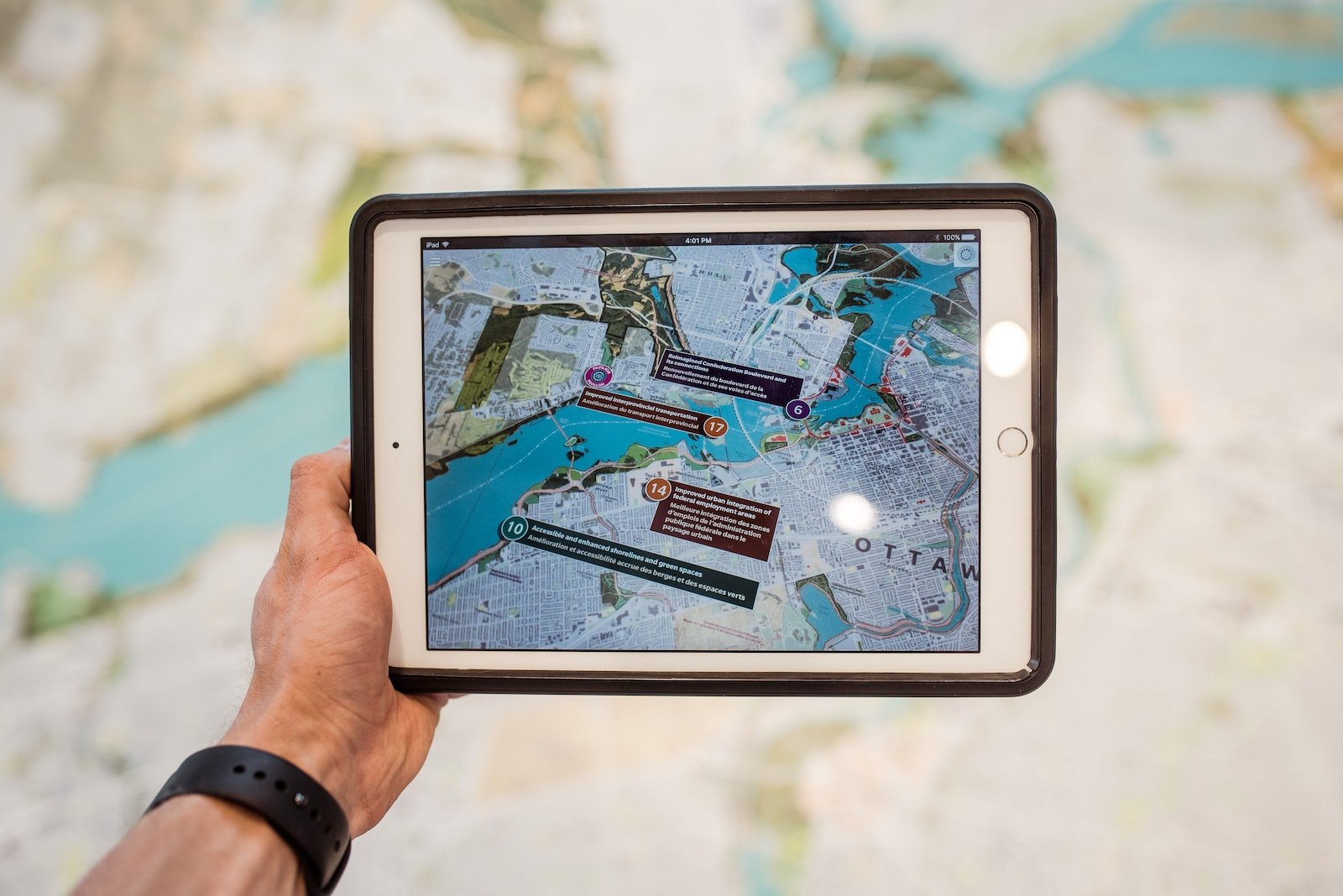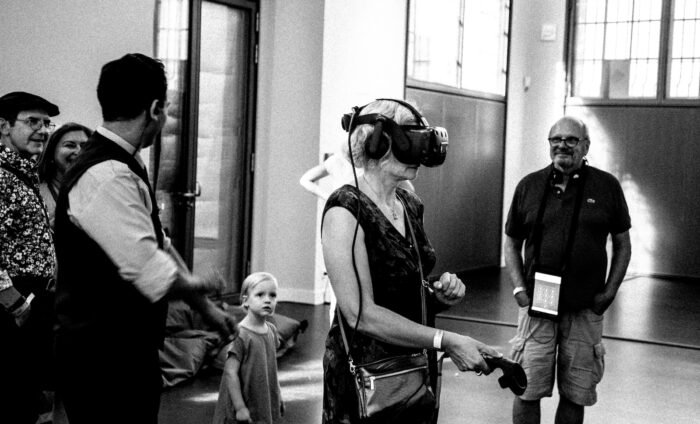Key Points:
- Augmented Reality, Mixed Reality and Virtual Reality are all parts of Extended Reality.
- Virtual Reality (VR) allows users to access a simulated environment and is used for gaming, marketing, tourism, education and more.
- Augmented Reality (AR) superimposes virtual objects onto the physical world. One of the best examples of AR apps is Pokémon Go.
- Mixed Reality (MR) overlays virtual objects onto the physical world that can be controlled and interacted with.
With the metaverse spearheading the next digital revolution, there has been a massive increase in the adoption of virtual reality, augmented reality and mixed reality tech (AR, VR, MR) worldwide. Large companies such as Meta and Microsoft have created state-of-the-art headsets that allow users to enjoy incredibly immersive experiences.
Since these innovations are relatively new, many individuals are not clear on the differences between virtual reality (VR), augmented reality (AR), mixed reality (MR) and extended reality (XR). This article aims to elaborate upon the differences between these technologies to fully enable users to harness these devices’ true potential.

What Is Extended Reality?
VR, AR, and MR technologies are all included under the umbrella term “XR.” The term “XR” is a notation for Extended Reality. Various use cases exist for these technologies, ranging from interactive virtual experiences to creating real-life industrial solutions.
Users can step into different multidimensional worlds that are more dynamic, interactive, and captivating and can provide many uses. For example, XR offers safe learning experiences that can help with corporate training, practicing surgical skills, testing real-life simulations and much more.
However, headsets such as the HoloLens can cost up to $3,500, which makes them inaccessible to regular customers. Large-scale companies such as Heinz and Kawasaki are currently using the HoloLens to create industrial metaverses to resolve supply chain problems and increase efficiency.
Difference Between AR, VR And MR
VR, MR and AR are all amazing technologies aiming to connect the human world with the virtual world, but they have unique characteristics.
- VR: Allows users to enter fully simulated digital environments to interact, work, play, shop and explore.
- AR: AR technology allows users to superimpose virtual objects onto real-life surroundings.
- MR: MR technology takes AR a step further and allows users to interact with the superimposed objects, thus bringing them to life and making the experience much more immersive.
One of the leading companies in the AR space, Apple, has made AR technology readily available by incorporating the necessary tech and software in all recent models. VR headsets such as the MetaQuest2 are also relatively affordable. However, Mixed Reality tech is still not widely used due to its high price.
What Is Virtual Reality?
VR offers users a chance to step into an immersive virtual space to experience things from a first-person perspective. While it was initially viewed as only an accessory for gaming, it is now being used to access incredible virtual worlds such as Roblox, Decentraland and more.
VR technology utilizes headsets to offer users a 360-degree field of vision within the virtual realm. Each headset has a controller or built-in hand tracking to allow users to move around and interact with the environment. These headsets are fully equipped with 3D audio, 1080p graphics and in-built microphones.
With exciting 3D development tools such as the Omniverse by NVIDIA, the future of virtual reality is very exciting. Developers are utilizing Unreal Engine or Unity to build complete virtual worlds with different interactive elements for users to explore.
VR-Style Technology
These are the leading technologies that use VR as their base working principle;
- PC integrated headsets
As their title implies, these VR headsets link to a PC (or game console) to produce lifelike virtual experiences. Modern systems have enormous processing power, allowing them to create immersive, realistic virtual worlds. Individuals can use special control systems in conjunction with virtual reality headsets. In this instance, individuals can engage with incredible digital spaces and explore and interact with other users.
- Standalone headsets
Computer-integrated VR headsets can be expensive, as you would have anticipated, and only a small number of individuals are ready to spend that much on them. However, there is still another method to enjoy virtual reality: standalone headsets that are not dependent upon consoles or computers.
The majority of standalone VR headsets deliver virtual experiences through a smartphone screen. Users only need to slide their smartphone into the headset to utilize these reasonably priced gadgets. This is precisely how Samsung Gear VR, Google Daydream, and Google Cardboard operate. For instance, Facebook’s Oculus Go can create virtual experiences without a computer or a smartphone. Priced at half the cost of a MetaQuest2 headset, the Oculus Go greatly expands the accessibility and affordability of virtual reality technologies.
- Videos Form of VR
YouTube enables 360-degree videos, which have quickly become popular. 360-degree films are omnidirectional and immersive, unlike traditional videos with a constrained field of view. Users will have to wear a headset to look around and fully experience the 360-degree movie, but the experience truly is worth the headset’s cost.
Applications Of Virtual Reality
Although there are other real-world applications, these two are the most popular ones:
Education
With immersive and interactive learning experiences, Virtual Reality content has the potential to change how individuals learn and retain data. There are several use cases in corporate settings where VR is utilized to conduct interactive training. Businesses can benefit by enabling employees to ‘visualize’ content in engaging settings. For example, imagine pitching to a lifelike virtual client to sharpen your sales closing skills.
Real Estate
For generations, real estate brokers have utilized photos to highlight houses. Agents may now accomplish this goal via using virtual reality, nevertheless. Because VR is immersive rather than static, like photographs, prospective buyers may take 3D tours and learn more about each property before arriving in person. Matterport is already using 360-degree video displays to help agents communicate with customers more effectively. Additionally, since clients may view their future houses in virtual reality, Virtual Reality can assist architects in exhibiting their projects to clients.
What Is Augmented Reality?
AR technology enables users to superimpose virtual elements on their physical environment. The main difference between augmented and virtual reality is that although adding data overlays might aid in delivering more profound insights, AR is still grounded in the user’s immediate environment. The virtual data displays offer a contextual aspect that can assist in understanding their surroundings, but users cannot interact with the elements.
AR-Style Technology
These are the leading technologies that use AR as their base working principle;
- Portable devices
Since individuals may use augmented reality programs on smartphones or tablets, AR is more accessible than MR or XR. Apps that employ augmented reality (AR) overlay virtual items on top of real-world images taken with a smartphone camera so that users can see them on their screens. Common AR apps operate this way; Pokémon Go is the finest example. Thousands of people have played this game on their cell phones and caught virtual Pokémon that they could only see on their displays.
- Smart glasses and AR headsets
Using specialized smart glasses or headsets is another method for producing Augmented Reality experiences. These headsets help in overlaying virtual objects into real-life surroundings. These headsets offer a more immersive experience as compared to portable devices.
Applications Of Augmented Reality
There are several real-world applications, but the two most frequent ones are as follows:
- Advertising
Augmented reality makes it easier for advertising agencies and marketers to connect with their target customers. Unlike traditional ads, augmented reality advertisements are interactive and entertaining, which helps them to spread brand recognition while promoting sales.
- Manufacturing
Emerging technologies can give companies a competitive benefit in the manufacturing sector. Businesses may increase productivity and quality by using augmented reality. But how? Augmented reality may aid manufacturing staff to decrease human error, cut time, and boost productivity. Regarding industrial uses, Upskill, for instance, provides an AR platform that enables large corporations to develop apps to increase efficiency.
If you want to learn more, check out our “What is Augmented Reality” article.
What Is Mixed Reality?
Mixed reality offers users a unique perspective, with digital objects overlaying real-life surroundings. This is a step ahead of AR, where users can interact with digital objects. This creates a true “mixed” reality that enables interaction with physical and virtual elements simultaneously.
The program easily adapts to the user’s activities and changes in the user’s immediate environment to provide fresh, up-to-date material. MR is the least accessible technology due to its high hardware and software requirements.
MR-Style Technology
These are the leading technologies that use AR as their base working principle:
- Holographic devices
The translucent glasses on these headsets provide excellent peripheral vision, with an added layer of interactivity through superimposing digital objects onto the physical environment. The best example of this device is the HoloLens 2 by Microsoft, used in several industries to increase productivity, solve supply chain issues and more.
- Immersive devices
Similar to VR headsets, mixed reality headwear includes non-translucent screens that totally obstruct the outside environment and employ cameras for tracking. This is how Windows MR headsets from Acer and HP operate.
Applications Of Mixed Reality
There are many real-world applications, but the two essential applications are:
- Industrial Applications
MR can help train individuals to become more efficient and can also assist in resolving supply chain issues. For example, if a fault occurs in an industrial line, instead of waiting for the technician to come and make things operational, the expert could guide workers using MR on what to do to apply fixes.
- Education
Mixed reality can be incredibly useful in teaching, similar to AR and VR. For example, the HoloLens allows surgeons to view scans from different angles, practice surgery simulations and more. Due to added layer of digital object interactivity, the MR experience helps enhance retention and understanding.
AR vs VR
These are the differences between AR and VR:
- AR overlays digital objects on top of physical surroundings, whereas VR, on the other hand, consists of a fully digital simulation.
- Unlike VR users, who are under the system’s control, AR users may control their position in the actual world. VR users can move around in the virtual world using their controller but cannot move in their physical surroundings.
- AR is accessible with a smartphone, while VR demands headset gear.
AR vs MR
These are the differences between AR and MR:
- The primary difference between AR and MR is that the digital objects overlayed onto the physical realm can be controlled and interacted with.
- MR gives users control over physical and virtual worlds, while AR displays digital objects in the physical world.
- MR requires a headset with a transparent lens or camera, while users can access AR through a smartphone.
- VR vs MR
These are the differences between virtual reality and mixed reality:
- As stated before, virtual reality consists of users stepping into an entirely simulated digital environment. MR simultaneously utilizes virtual and physical worlds by overlaying interactive elements on physical surroundings.
- VR and MR require headset gear, but the headset gear for MR needs to be transparent for the user to be able to see the physical world, while for VR, it needs to be opaque to create a completely immersive environment.
Final Thoughts
It is important to remember that these technologies are still in their infancy, and that there is a long way to go before they reach their full potential. Tech companies are working relentlessly to bring down the prices of headsets and other hardware to make the technology more readily accessible to individuals. We hope this article has been helpful in explaining the differences between AR, VR and MR.
References
What is AR, VR, MR & Tango? | Lenovo UAE
VR, AR, MR: What are the difference between VR and AR and MR? | Elara (elarasystems.com)
What’s the difference between VR, AR, and MR? – SAE Australia
The difference between AR, VR, and MR | Vsight
What’s the Difference Between AR, VR, and MR? | The Franklin Institute (fi.edu)
AR vs. VR vs. MR: Differences, similarities and manufacturing uses (techtarget.com)
xR, AR, VR, MR: What’s the Difference in Reality? – Arm Blueprint
What’s the Difference Between AR and VR? | Tulane School of Professional Advancement
What’s the difference between AR, MR and Spatial Computing? (starmark.com)
What really is the difference between AR / MR / VR / XR ? | by North of 41 | Medium
VR vs. AR vs. MR vs. XR: What’s the difference? – Big Think
VR, AR, MR: Which Reality Technology to Choose for Your Business in 2022 (rubygarage.org)
What Is Extended Reality? Everything You Need To Know – Roundtable Learning
If you found this article to be informative, you can explore more current Digital Twin news here exclusives, interviews, and podcasts.














